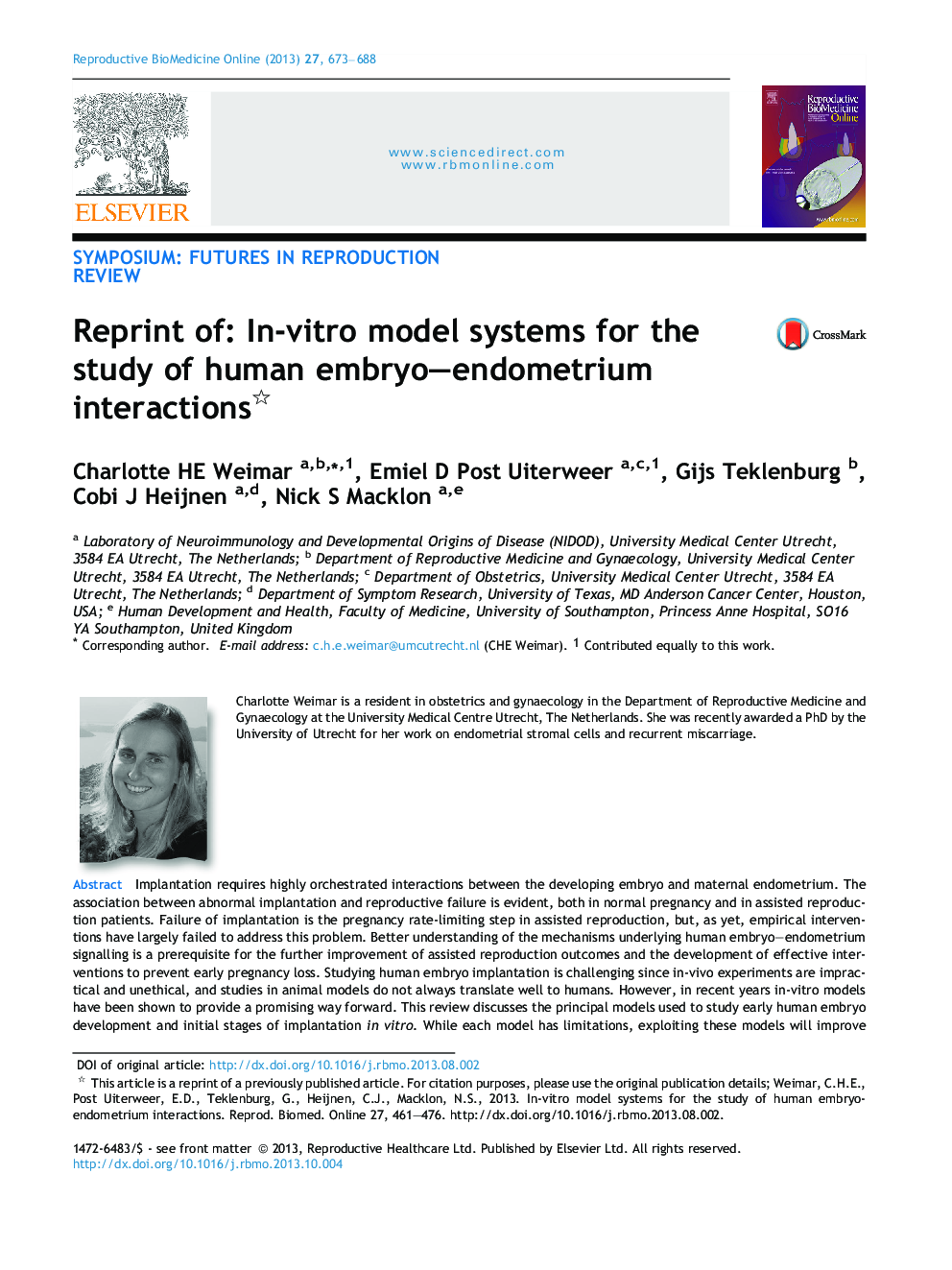| Article ID | Journal | Published Year | Pages | File Type |
|---|---|---|---|---|
| 3970222 | Reproductive BioMedicine Online | 2013 | 16 Pages |
Implantation requires highly orchestrated interactions between the developing embryo and maternal endometrium. The association between abnormal implantation and reproductive failure is evident, both in normal pregnancy and in assisted reproduction patients. Failure of implantation is the pregnancy rate-limiting step in assisted reproduction, but, as yet, empirical interventions have largely failed to address this problem. Better understanding of the mechanisms underlying human embryo–endometrium signalling is a prerequisite for the further improvement of assisted reproduction outcomes and the development of effective interventions to prevent early pregnancy loss. Studying human embryo implantation is challenging since in-vivo experiments are impractical and unethical, and studies in animal models do not always translate well to humans. However, in recent years in-vitro models have been shown to provide a promising way forward. This review discusses the principal models used to study early human embryo development and initial stages of implantation in vitro. While each model has limitations, exploiting these models will improve understanding of the molecular mechanisms and embryo–endometrium cross-talk at the early implantation site. They provide valuable tools to study early embryo development and pathophysiology of reproductive disorders and have revealed novel disease mechanisms such as the role of epigenetic modifications in recurrent miscarriage.Embryo implantation is dependent on a complex interaction between the developing embryo and maternal uterine cells. An association between abnormal implantation and reproductive failure is evident, both in normal pregnancy and in assisted reproduction patients. Failure of implantation is the pregnancy rate-limiting step in assisted reproduction. A better understanding of the mechanisms underlying the responsible signals in the interaction between human embryo and maternal uterine cells in embryo implantation is a prerequisite for further improvement of assisted reproduction outcomes and the development of effective interventions to prevent reproductive problems. Due to practical and ethical considerations, embryo implantation cannot be studied in humans, and no representative animal model has been identified. However, in recent years, substitute in-vitro (laboratory) models have been shown to provide a promising way forward in our understanding of the implantation processes. In this review, the principal models which have been used to study human embryo–maternal uterine cell interactions are discussed. While each model has its limitations, exploiting these in-vitro models will improve our understanding of the molecular mechanisms and embryo–uterus cross-talk at the early implantation site. In addition, they provide tools to study early embryo development and processes underlying developing reproductive disorders such as implantation failure and recurrent miscarriage.VIDEO LINK:http://sms.cam.ac.uk/media/1400935
